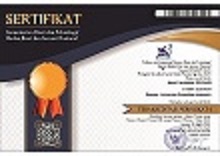Transforming Sundanese Local Values as an Architectural Identity of a Creative Hub in Bandung City
Abstract
Full Text:
PDFReferences
Antoniades, A. C. (1992). Poetics of Architecture: Theory of Design. John Willey and Sons.
Breakwell, G. M. (2012). Identity and social representations. Identity Process Theory: Identity, Social Action and Social Change, January 1993, 118–134. https://doi.org/10.1017/CBO9781139136983.010
Dana, S. (2023). Tahun Anggaran : 2023. 061, 70027785.
Ekadjati, E. S. (1984). Kebudayaan Sunda. Girimukti Pasaka.
Fitriyana, F. (2012). Pengembangan Bandung Kota Kreatif Melalui Kekuatan Kolaboratif Komunitas. Jurnal Perencanaan Wilayah Dan Kota B SAPPK, 1(1), 1–8.
Frampton, K. (1983). Toward A Critical Regionalism: Six Points for an Architecture of Resistance. Bay Press.
Glazer, N. (2014). From a Cause to a Style. In From a Cause to a Style. https://doi.org/10.1515/9781400827589
Grigoryeva, E. (2022). Creative City. Project Baikal, 73, 55. https://doi.org/10.51461/pb.73.09
Jamaludin. (2011). Estetika Sunda dan Implementasinya dalam Desain Kontemporer. Konferensi Internasional Budaya Sunda II Revitalisasi Budaya Sunda: Peluang Dan Tantangan Dalam Dunia Global, 1–17. http://lib.itenas.ac.id/kti/wp-content/uploads/2015/04/KIBS_jamaludin.pdf%0Ahttp://beta.lecture.ub.ac.id/files/2014/02/KIBS_jamaludin.pdf
Khan, N. (2020). Cultural Representations. A Cultural History of Hair in the Modern Age, 163–180. https://doi.org/10.5040/9781474206013.0012
Norberg-Schulz, C. (1980). Genius loci : towards a phenomenology of architecture.
Nuryanto, N. (2015). PENGEMBANGAN MODEL DESAIN RUMAH RAMAH GEMPA DI DESA. September.
Patrakomala. (2024). Infografis Kreatif.
Peter Herrle, E. W. (2008). Architecture and Identity. LIT Verlag Munster.
Pratt, A. C., Dovey, J., Moreton, S., Virani, T., & Merkel, J. (2016). Creative Hubs: Understanding the New Economy. British Council, August, 96. https://creativeconomy.britishcouncil.org/media/uploads/files/HubsReport.pdf
Prayuko, B. V., & Kusliansjah, Y. K. (2023). Identification of Creative Clusters and Understanding its Relation with Heritage Building Clusters In Bandung, Indonesia. 5(3), 58–70. www.ijmcer.com
Salura, P. (2015a). Sebuah Kritik: Arsitektur Yang Membodohkan. Gakushudo.
Salura, P. (2015b). Sundanese Architecture. Rosda.
Schön, D. A. (1963). The Displacement of Concepts. Tavistock.
Sumardjo, J. (2009). Kosmologi dan Pola Tiga Sunda. Imaji, 4(2), 101–110. https://www.neliti.com/publications/218259/kosmologi-dan-pola-tiga-sunda
Thoring, K. (2019). Designing Creative Space: A Systemic View on Workspace Design and its Impact on the Creative Process. Technische Universität München.
DOI: https://doi.org/10.17509/jaz.v8i3.86381
Refbacks
- There are currently no refbacks.
Copyright (c) 2025 Muhammad Bhuana Yusuf Al Iskandar, Rahadhian Prajudi Herwindo

This work is licensed under a Creative Commons Attribution-ShareAlike 4.0 International License.





